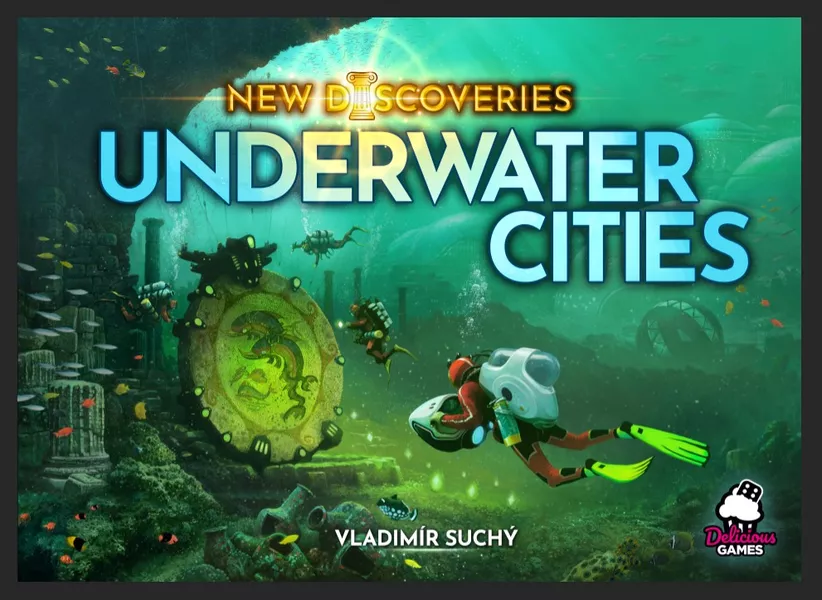Welcome to this week’s review! This week I’m discussing the first expansion for Underwater Cities. If you missed last week’s review of the base game, you can check it out here. And if you’re interesting in checking out an unboxing of the expansion, you can find it here. So without further ado, let’s jump into my thoughts.
Disclosure: A review copy of this game was provided to The Meeple Digest in exchange for an honest, unbiased review. This review is not intended to be an endorsement.
Underwater Cities: New Discoveries
- Designer: Vladimir Suchý
- Publisher: Rio Grande Games, Delicious Games
- Complexity: Medium
- Time: 100-180 Minutes
- Players: 1-4
- Main Mechanisms: Worker Placement, Hand Management
Underwater Cities: New Discoveries adds additional era and special cards, a quick start option with asymmetric starting assistants and resource tiles, exciting three-layer player boards, new metropolises, and an interactive museum board.
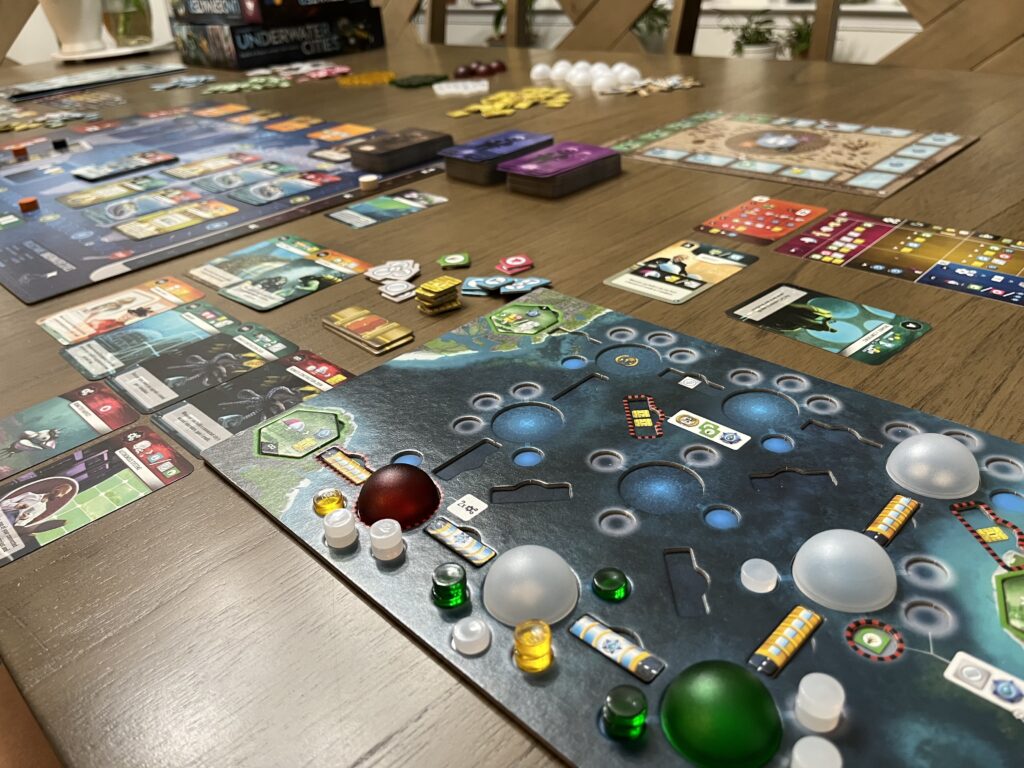
Starting with the new cards, they are easy to incorporate and add some nice variety to the game. I haven’t had the chance to interact with all of the new 52 cards, but from my initial experience, they appear to round out and offer more strategies to explore. In my initial review of the base game, I briefly discussed the “big kelp” strategy. In that review, I mentioned that I felt the strategy was very strong and possibly easier to pull off than some of the alternatives in the game. When I played using the New Discoveries expansion, I tried to focus less on kelp and found that some of the new cards helped push me in different directions. For those that felt that kelp was overpowered in the base game, I don’t know that the expansion is going to be enough to change your mind, but I do feel that the expansion’s cards help push players in new directions and offer more paths to victory.
Another welcome addition to the game is with the quick start option. With this mode, players will select from one of two asymmetric personal assistants during setup to replace the standard one from the base game. These new assistants still come with an action effect, but they also come with another benefit as well, usually in the form of a permanent effect. For example, one assistant provides the player with a discount of one credit or steelplast whenever they build a city. I found these new assistants very fun, and like the new cards, pushed me in different directions.
One slight caveat with the assistants is that I’m not entirely convinced they are all balanced. In the first game I played, I chose an assistant that provided an additional steelplast and point during production for each city I had with all three different types of buildings. I found this incredibly powerful over the course of the game, and I probably gained at least ten points from that effect without factoring in the extra steelplast I received. In contrast, another assistant provides a benefit that whenever a player uses an action slot that provides at least one science, they also get one credit. Someone with that assistant might be lucky to even gain ten credits from that benefit over the course of a game. While I’ll probably always elect to play with the assistants, I may need to consider some sort of house rule to draft starting assistants.
The other big change with the quick start option are the starting resource tiles. During setup, players get to choose one from a predetermined number of tiles. These resource tiles might provide buildings and/or an additional starting city, along with a set of resources instead of the basic set from the base game. In addition, when playing with this quick start option, the first era is shortened from four rounds down to three. Effectively, this mode provides a nice early boost to players, while also shortening the game slightly, which I found to be a win-win situation.
The expansion also comes with eight, dual-sided, three-layer player boards. The eight options from the base game return in dual-layer form, along with eight new options to pick from. I have to admit, I didn’t have too much of an issue keeping the pieces in place using the previous boards, but having slots to fit them in now is so incredibly satisfying. The eight new options also add to the variety and further increase the replayability.
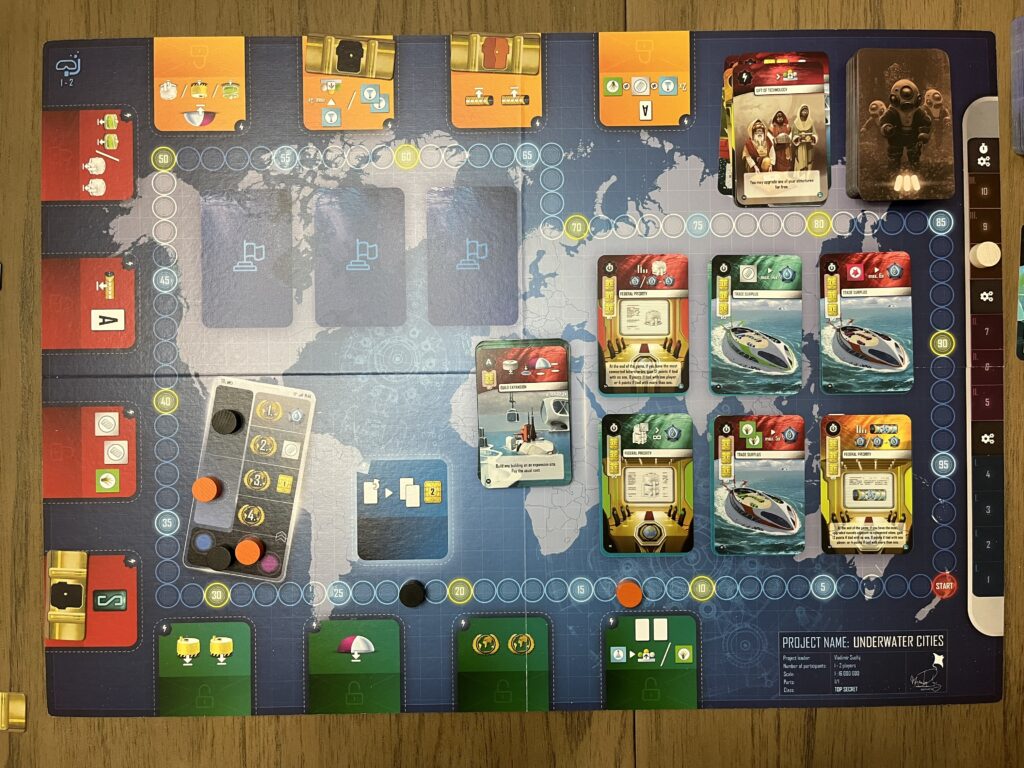
New Discoveries also adds a different type of metropolis, along with a few variants. In one of the variants (metropolis race), instead of randomly selecting blue metropolises to add to your player board during setup, a number of blue and new green metropolises are selected during setup and whenever a player connects one of their metropolis locations on their player board, they get to choose from one from those still available in the display to add to their board. This creates a race for players to link their metropolises in order to get an early choice.
The other variant (metropolis choice) uses four of the new player boards where again instead of randomly picking starting metropolises, each board indicates a certain number and type to draw during setup and players now get to pick between the ones drawn. This helps to plan out your early strategy and allows you to build synergies between them.
Finally, the expansion adds a two-sided museum board to the game. The other four of the new player boards allow players to interact with the museum. Whenever a player builds buildings on certain locations on their player board, they get to take one of their five museum tokens and place it on the museum board. Each one is placed in a certain section depending on whether it was their first or fifth one played. Additionally, each of the different sections provide different benefits, but some examples of them are production bonuses or additional victory points.
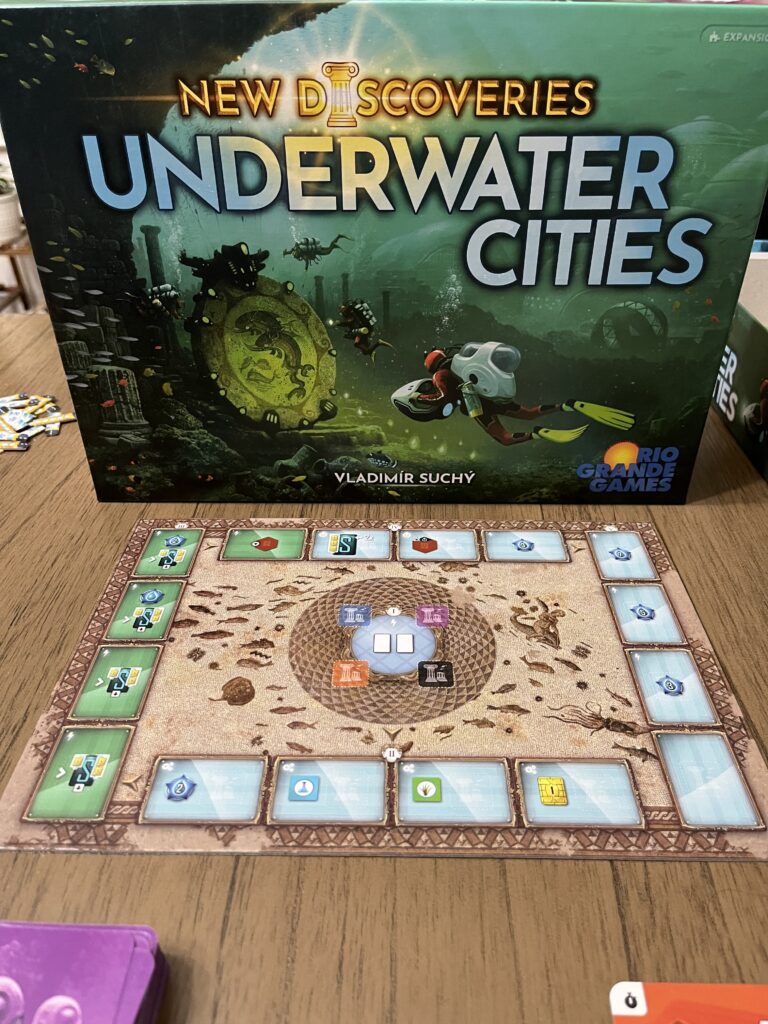
Of all the new features in the expansion, I unfortunately found the museum to be the weakest. I like that players are encouraged to expand on their player board, and the earlier you get to place your museum tokens on the board, the more choices you’ll have and the stronger they’ll be. However, other than a couple standouts, most of the benefits are just more of what we’ve already seen. While at the same time, if you choose to mostly ignore the museum, you’re leaving a lot of points on the table. It also feels like a missed opportunity that you if want to play with the museum, only four of the sixteen player boards work with it. Overall, the museum is fine, I just didn’t personally find it as impactful or interesting as the other parts of the expansion.
Finally, as with the base game, the art and components in the expansion were a bit of a letdown. The same art style is carried over from the base game, and even the new art on the museum board is uninspiring. More problematic, I did notice a few minor production issues. On the new player boards, one of the metropolis tile slots is off-center, making the tile sit crookedly when looking at the other two on your board. I also noticed that some of the resource icons on the player boards were also printed slightly off-center. In addition, there is an ever so slight color difference from the new era cards compared to the ones from the base game. These are certainly not deal-breakers, and I have to admit that the new player boards are a nice improvement overall, but it is a shame that these issues weren’t caught during production.
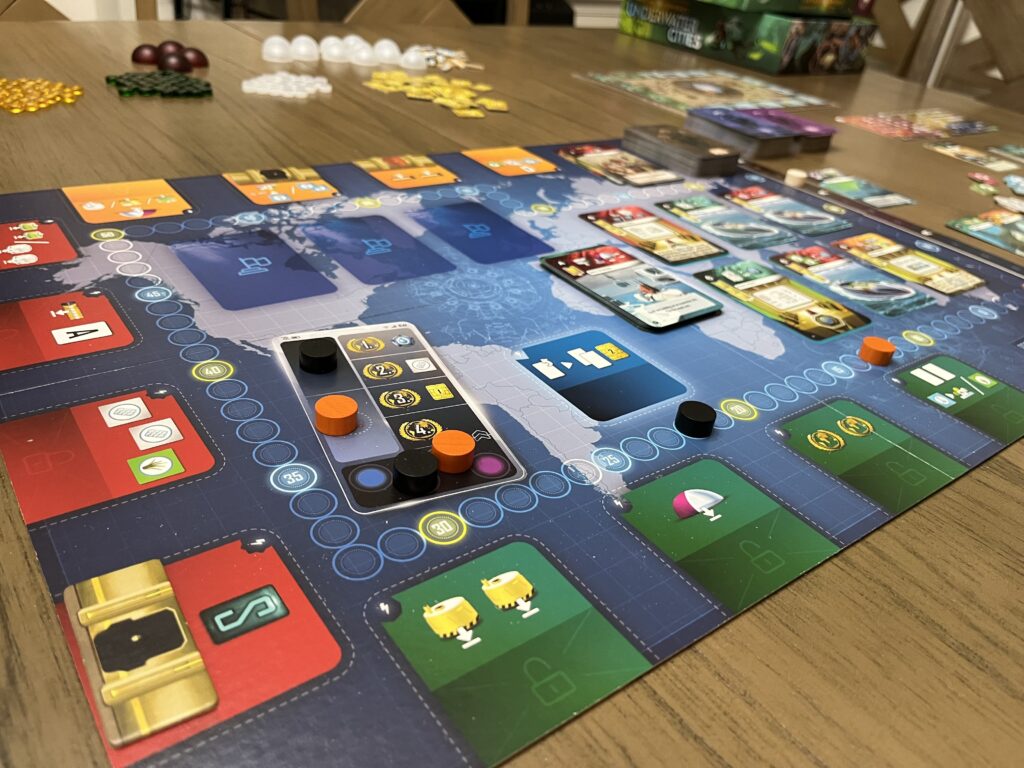
Overall, Underwater Cities: New Discoveries is an excellent example of what I’m looking for in an expansion. The expansion manages to further enhance and refine the game without bolting on too much complexity. Additionally, the new cards, quick start option, and player boards offer greater variety and paths to victory. While I didn’t find the museum to be as exciting as the other parts of the expansion, I like that I have the option to play it every now and then. Component wise, while the new player boards are a nice addition, I still wish all of the components matched up to the excellent gameplay. However, that doesn’t detract New Discoveries from being a great expansion to an already outstanding game.
With that, I’ll wrap up this week’s review! I’d love to hear your thoughts on any of the games I’ve mentioned or future content suggestions in the comments below. Happy gaming!
If you liked this post and want to be notified when new content is released, then follow me on Instagram @themeepledigest.
